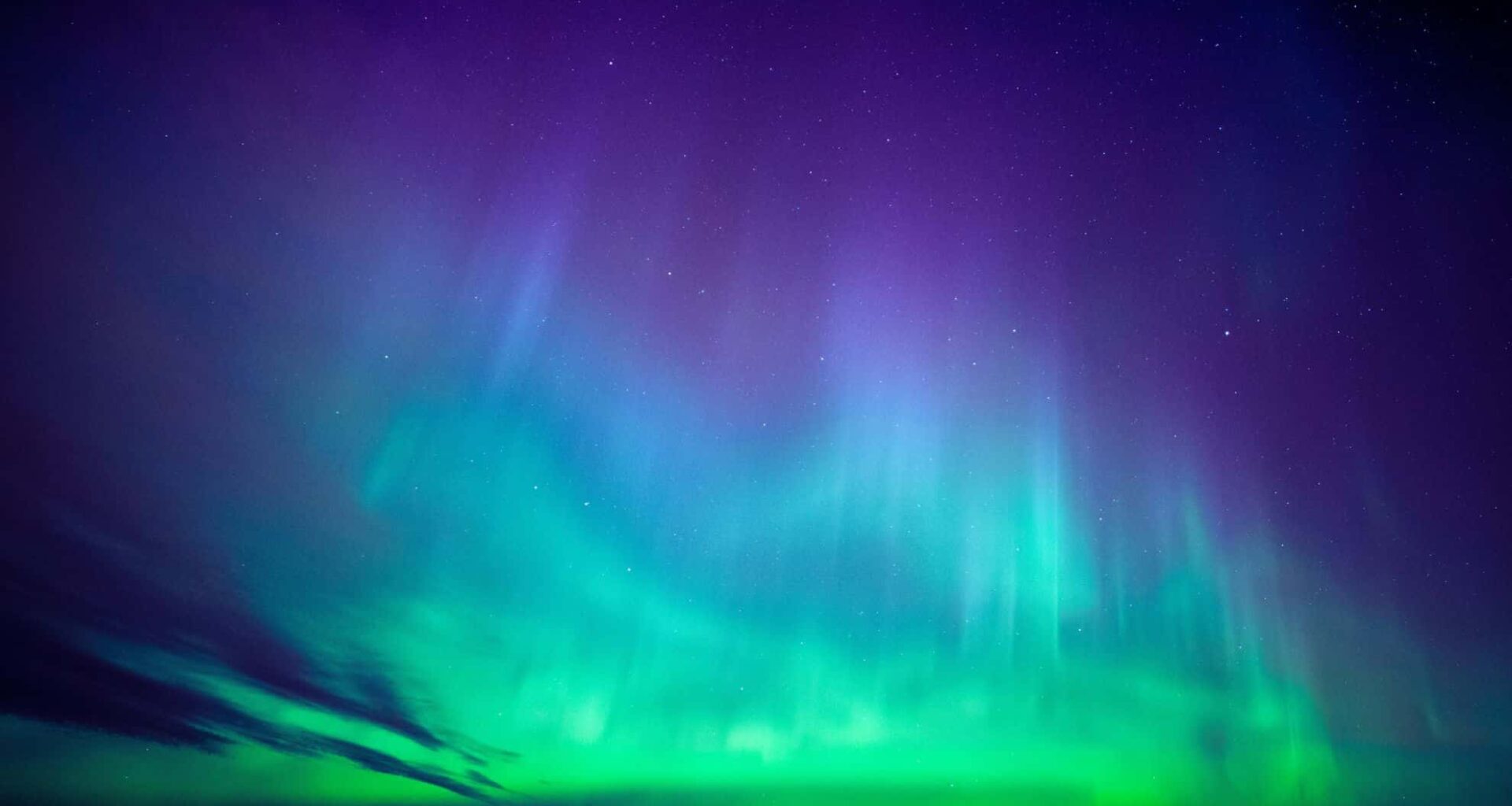The northern lights might illuminate the skies from Alaska to Illinois on the night of August 7-8, 2025. This rare opportunity arises from a solar storm triggered by a coronal mass ejection (CME), which is expected to cause geomagnetic disturbances. According to the National Oceanic and Atmospheric Administration’s (NOAA) Space Weather Prediction Center (SWPC), a minor to moderate geomagnetic storm (G1-G2) watch has been issued, with the potential for auroras visible well beyond their typical high-latitude homes. As of August 5, 2025, NOAA’s 3-day forecast (available on their website) further highlights the expected increase in space weather activity due to the solar storm, suggesting heightened aurora activity during the night of August 7-8.
18 states will have the opportunity to witness the auroras, according to Space.com, as these events present a unique chance for skywatchers to see the Northern Lights.
Understanding the Space Weather Behind the Northern Lights
The Northern Lights, or auroras, are a fascinating phenomenon caused by solar activity, specifically solar winds and CMEs interacting with Earth’s magnetic field. As charged particles from the Sun travel toward Earth, they collide with gases in our atmosphere, creating the vibrant colors we see. The more intense the geomagnetic storm, the farther south auroras can be seen. On August 7-8, NOAA predicts geomagnetic storms ranging from G1 (minor) to G2 (moderate), with a small chance of reaching G3 (strong) levels. According to NOAA’s G1-G2 Watch issued on August 9, 2025, these storms could trigger visible auroras as far south as Illinois, with some observers possibly able to catch a glimpse in even more southern states, depending on atmospheric and weather conditions.
For many, the sight of auroras is a bucket-list experience, but catching them isn’t always easy. As solar storms are unpredictable, even a moderate geomagnetic disturbance might generate auroras visible as far south as the northern U.S. However, the window for aurora viewing is often short-lived and can be impacted by local weather patterns, so staying prepared is key.
What the NOAA’s 3-Day Forecast Tells Us About the Upcoming Solar Storm
The NOAA’s 3-day forecast is a critical tool for understanding the evolution of space weather conditions and their potential impact on Earth. For skywatchers planning to view the northern lights, this forecast provides insight into when the most significant geomagnetic activity might occur. As of August 7-8, NOAA predicts that the CME from the Sun will cause geomagnetic activity beginning as early as 11:00 PM EDT (03:00 GMT on August 8), with peak storming between 2:00 AM to 5:00 AM EDT on August 8. Based on these predictions, skywatchers in the northern U.S. should be on alert for auroras during the overnight hours, especially between 2 AM and 5 AM local time.
This forecast is in alignment with the SWPC’s G1-G2 Watch, as both indicate that geomagnetic disturbances are likely to occur during this period. For those eager to catch a glimpse of this celestial show, NOAA’s resources are invaluable in offering up-to-date predictions about when the auroras might be visible and where the best locations are to observe them.
Where Will the Northern Lights Be Visible on August 7-8?
As predicted by the NOAA and outlined by Space.com, the aurora oval, a region of the Earth’s atmosphere where auroras are most commonly visible, will expand southward during this geomagnetic storm. The 18 U.S. states that could witness the northern lights, based on their proximity to the aurora oval’s center, are:
- Alaska
- Montana
- North Dakota
- Minnesota
- Wisconsin
- Michigan
- Maine
- South Dakota
- Vermont
- New Hampshire
- Idaho
- Washington
- Oregon
- New York
- Wyoming
- Iowa
- Nebraska
- Illinois
The storm’s strength will determine how far south these auroras will be visible, with Alaska and northern states like Montana, North Dakota, and Minnesota expected to have the highest chance of seeing a vibrant display. However, as solar storms can sometimes be more intense than predicted, the lights may appear farther south than the forecast suggests. This phenomenon is why many skywatchers across the U.S. should stay on alert.
